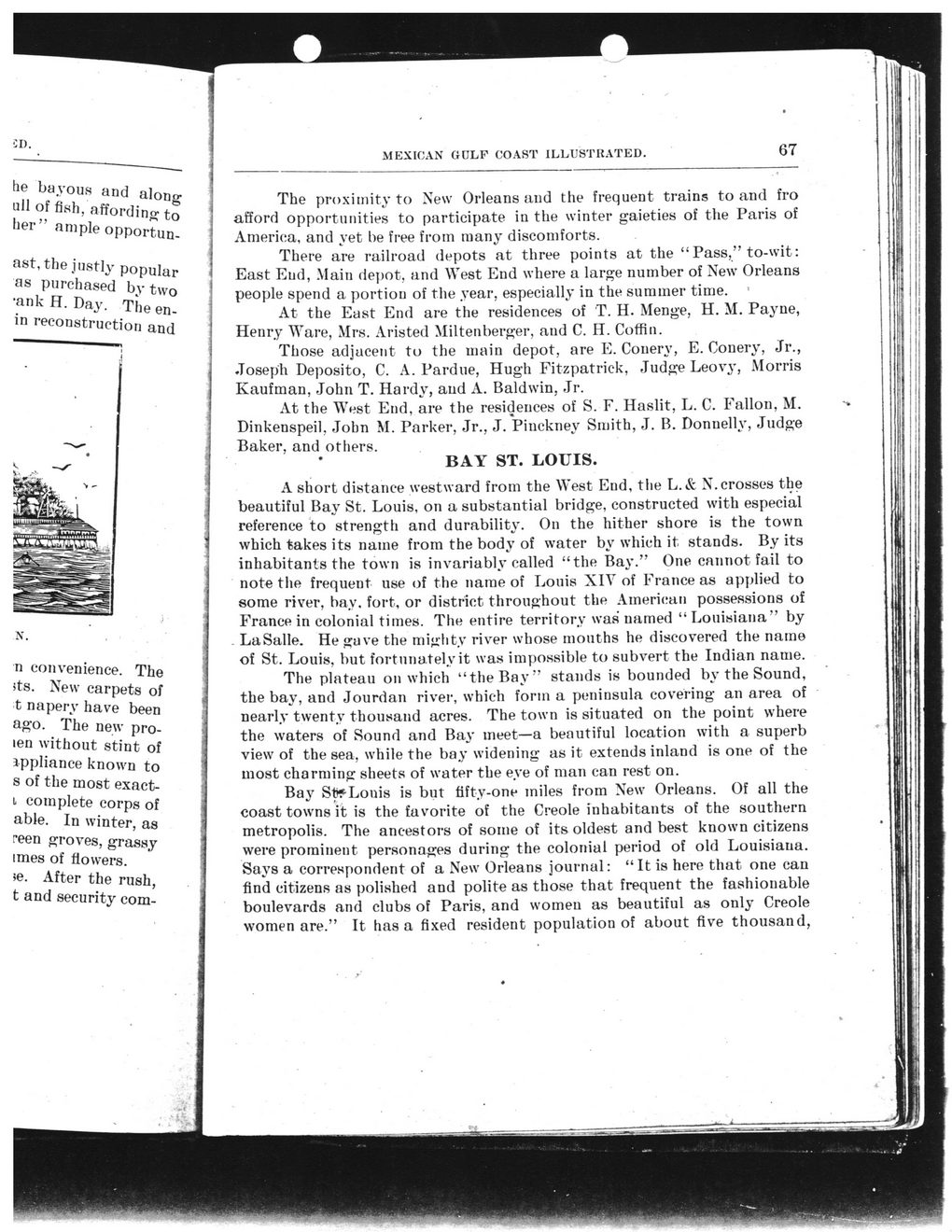This text was obtained via automated optical character recognition.
It has not been edited and may therefore contain several errors.
CD. he bayous and along “II of fish, affording to r” ample opportunist, the justly popular as purchased by two ■ank H. Day. Theen! in reconstruction and N. n convenience. The its. New carpets of t n apery have been ago. The new pro-len without stint of appliance known to s of the most exact-i complete corps of able. In winter, as reen groves, grassy imes of flowers. *e. After the rush, t and security com- MEXIOAN GULF COAST ILLUSTRATED. 67 The proximity to New Orleans and the frequent trains to and fro afford opportunities to participate in the winter gaieties of the Paris of America, and yet be free from many discomforts. There are railroad depots at three points at the “ Pass,” to-wit: East Eud, .Main depot, and West End where a large number of New Orleans people spend a portion of the year, especially in the summer time. ' At the East End are the residences of T. H. Menge, H. M. Payne, Henry Ware, Mrs. Aristed Miltenberger, and C. H. Coffin. Those adjacent to the main depot, are E. Conerv, E. Conery, Jr., Joseph Deposito, C. A. Pardue, Hugh Fitzpatrick, Judge Leovy, Morris Kaufman, John T. Hardy, and A. Baldwin, Jr. At the West End, are the residences of S. F. Haslit, L. C. Fallon, M. Dinkenspeil, John M. Parker, Jr., J. Pinckney Smith, J. B. Donnelly, Judge Baker, and others. BAY ST. LOUIS. A short distance westward from the West End, the L.& N. crosses the beautiful Bay St. Louis, on a substantial bridge, constructed with especial reference to strength and durability. On the hither shore is the town which takes its name from the body of water by which it stands. By its inhabitants the town is invariably called “the Bay.” One cannot fail to note the frequent use of the name of Louis XIV of France as applied to some river, bay. fort, or district throughout the American possessions of France in colonial times. The entire territory was named “Louisiana” by LaSalle. He gave the mighty river whose mouths he discovered the name of St. Louis, but fortunately it was impossible to subvert the Indian name. The plateau on which “the Bay” stands is bounded by the Sound, the bay, and Jourdan river, which form a peninsula covering an area of nearly twenty thousand acres. The town is situated on the point where the waters of Sound and Bay meet—a beautiful location with a superb view of the sea, while the bay widening as it extends inland is one of the most charming sheets of water the eye of man can rest on. Bay St*Louis is but fifty-one miles from New Orleans. Of all the coast towns it is the favorite of the Creole inhabitants of the southern metropolis. The ancestors of some of its oldest and best known citizens were prominent personages during the colonial period of old Louisiana. Says a correspondent of a New Orleans journal: “It is here that one can find citizens as polished and polite as those that frequent the fashionable boulevards and clubs of Paris, and women as beautiful as only Creole women are.” It has a fixed resident population of about five thousand,

Mexican Gulf Coast The Mexican Gulf Coast on Mobile Bay and Mississippi Sound - Illustrated (66)